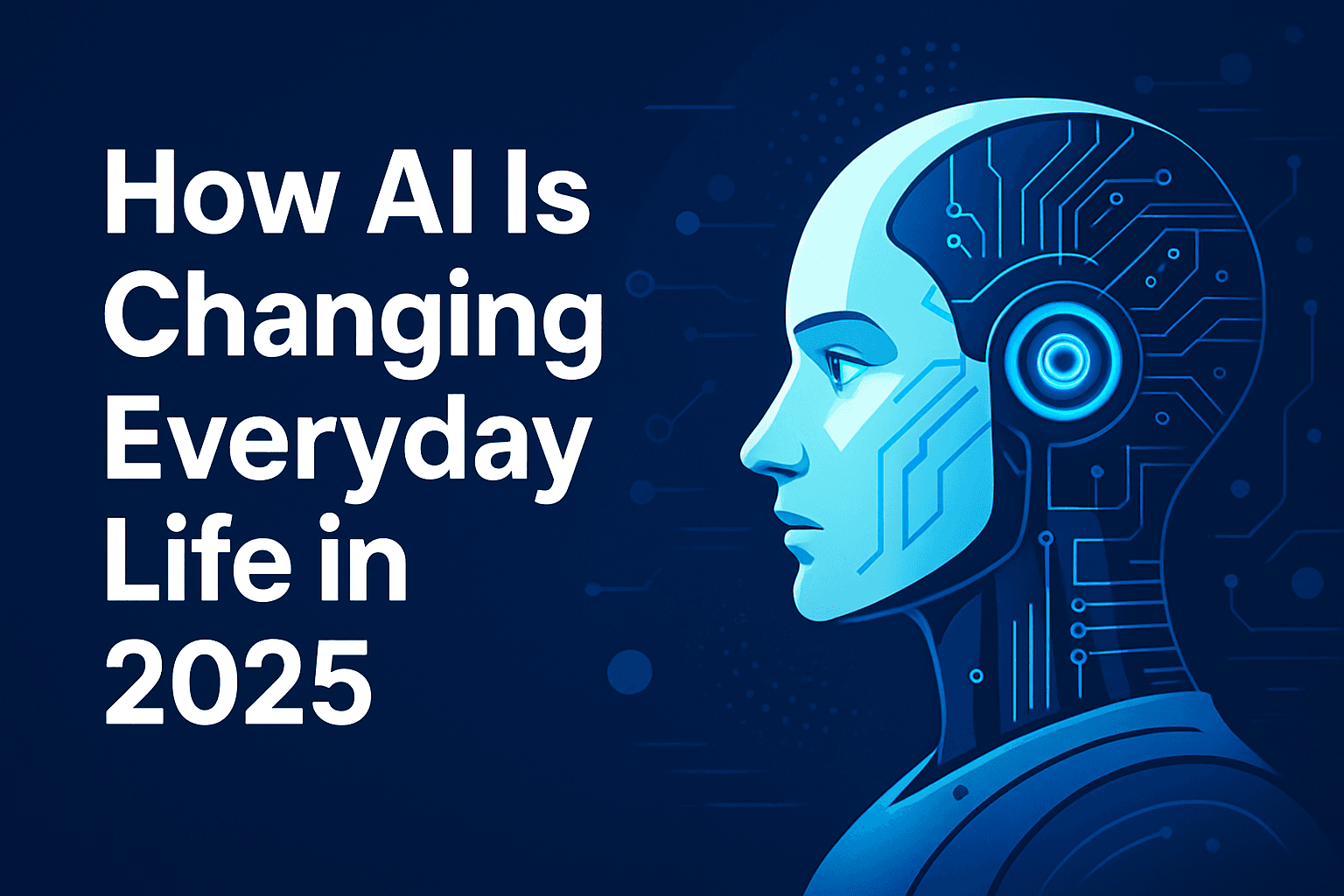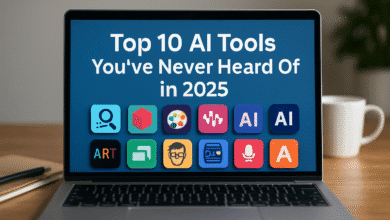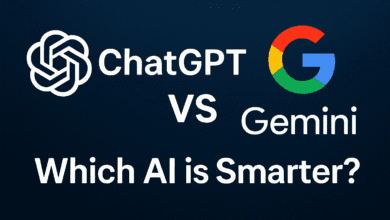How AI Is Changing Everyday Life in 2025: Real Examples & Applications

Introduction: AI Is No Longer Science Fiction
In 2025, artificial intelligence in everyday life is no longer a futuristic dream—it’s part of our daily reality. Whether you realize it or not, AI applications in daily life are everywhere: from healthcare and transportation to shopping and home management. What was once science fiction is now in your pocket, your car, and even your refrigerator.
This article will explore real-life examples of AI 2025, showing exactly how this technology is transforming our routines and what the future holds.
1. AI in Healthcare: Saving Lives Faster Than Ever
Healthcare has experienced one of the biggest transformations thanks to AI-powered devices and algorithms.
Key Applications:
Early Disease Detection: AI can detect early signs of diseases like cancer, heart disease, and diabetes faster than human doctors.
Personalized Treatment Plans: AI analyzes patient history, genetic information, and lifestyle to recommend custom treatments.
Remote Patient Monitoring: Wearable devices track vital signs in real time and alert doctors when something’s wrong.
Example in the USA: Hospitals use AI to scan MRI and CT images, reducing diagnostic errors by over 30%.
Example in India: AI-powered telemedicine platforms reach rural areas, helping millions who previously had no access to specialized care.
Statistics: According to a 2024 WHO report, AI reduced misdiagnosis rates by 25% in hospitals that fully implemented AI diagnostic systems.
2. AI in Education: Personalized Learning for Everyone
Artificial intelligence in everyday life is changing how we learn.
Applications in Education:
Adaptive Learning Platforms: Tools like Squirrel AI in China adjust lessons based on each student’s strengths and weaknesses.
Real-Time Translation: Breaking language barriers with AI-powered translation in online classrooms.
Automated Grading: Teachers save time while students get instant feedback.
Example in Brazil: Schools using AI tutors saw a 40% improvement in student test scores within a year.
Example in Europe: Virtual reality combined with AI enables immersive history and science lessons.
3. AI in Transportation: From Self-Driving Cars to Smart Traffic
The way we move has been transformed by AI applications in daily life.
Key Changes:
Self-Driving Vehicles: Companies like Waymo and Tesla operate autonomous taxis in major cities.
Smart Traffic Systems: AI traffic lights reduce congestion and improve fuel efficiency.
Predictive Maintenance: AI detects issues in public transport before breakdowns happen.
Example in Singapore: AI-driven traffic management cut commute times by 25%.
Example in Dubai: Autonomous metro systems run with zero human drivers, monitored entirely by AI.
4. AI in Shopping: Personalized Recommendations Everywhere
AI is redefining how we shop, making it faster, easier, and more personal.
Applications:
Recommendation Engines: Like Netflix for shopping—predicting what you need before you search.
Virtual Try-On Tools: Letting customers see how clothes, makeup, or furniture will look in real life.
Automated Customer Service: AI chatbots handle thousands of queries instantly.
Example in South Korea: AI in supermarkets tracks customer behavior to optimize store layouts.
Example in USA: Amazon anticipates orders before customers make them, pre-shipping items to nearby warehouses.
5. AI at Home: Making Life Easier
Our homes have become AI-powered ecosystems.
Daily Applications:
Smart Climate Control: AI learns your preferences and adjusts heating and cooling automatically.
Food Management: Smart fridges track expiry dates and suggest recipes.
Household Chores: Robotic vacuum cleaners and lawn mowers operate without human help.
Example in Sweden: AI energy management systems cut household electricity bills by up to 20%.
6. AI in Entertainment and Media
Beyond work and chores, AI is enhancing how we relax.
Applications:
Personalized playlists on Spotify.
AI-written scripts for movies and series.
AI-generated video game characters that adapt to player behavior.
Example: In Japan, an AI co-wrote a bestselling novel in 2024, blurring the line between human and machine creativity.
7. AI in Finance and Banking
Even your money is touched by AI daily.
Applications:
Fraud detection that spots suspicious transactions instantly.
AI financial advisors helping people invest smarter.
Automated bill payments and savings plans.
Example in UK: AI-driven budgeting apps help users cut unnecessary expenses by 15% annually.
8. AI and Privacy: The Double-Edged Sword
While AI in daily activities is useful, it raises privacy concerns.
Data collection by AI assistants.
Facial recognition in public spaces.
The risk of biased algorithms making unfair decisions.
FAQ: Artificial Intelligence in Everyday Life
Q1: What are the most common everyday uses of AI?
Healthcare, education, transportation, shopping, home management, and entertainment.
Q2: Will AI replace human jobs?
AI will automate certain tasks but also create new job opportunities, especially in AI development, maintenance, and oversight.
Q3: Is AI safe to use in daily life?
Yes, when properly regulated. The main risks involve data privacy and ethical use.
Conclusion: The Future of AI in Daily Life
From AI-powered devices in homes to AI applications in daily life in hospitals, schools, and streets, artificial intelligence is no longer optional—it’s essential.
As we move beyond 2025, expect:
AI companions for elderly care.
Fully automated smart cities.
AI systems integrated into government services.
The challenge will be ensuring that these technologies remain ethical, transparent, and beneficial for all. But one thing is certain—AI isn’t just the future; it’s already here, shaping the way we live every single day.




